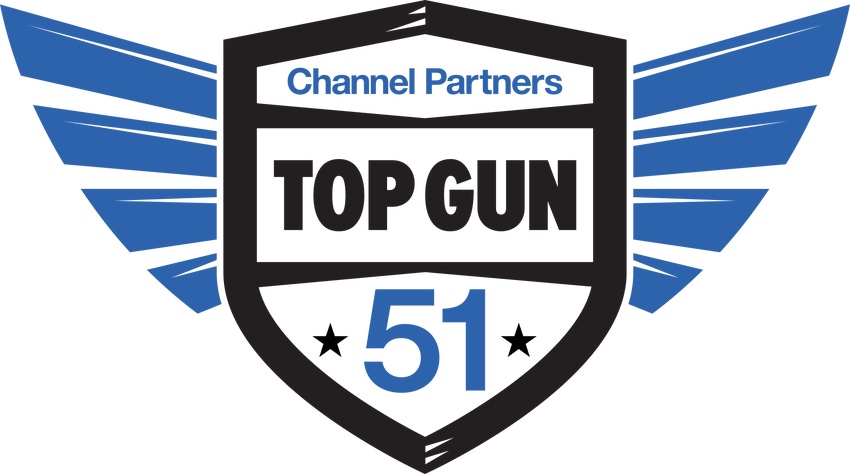Microsoft chief Schuster advises next-gen channel leaders to cross boundaries in your organization.
October 2, 2019

If ever here were a vendor that had to rethink its channel over the years, look no further than Microsoft, which launched a Microsoft Certified Solution Provider program in 1992. And if ever there was a next-generation channel leader, it’s Gavriella Schuster, corporate, vice president, One Commercial Partner Organization. Schuster is an inaugural Top Gun 51 channel leader.

Microsoft’s Gavriella Schuster
With 24 years at Microsoft under her belt, Schuster maintains a healthy attitude for change and a channel leadership style that includes a vision in today’s world for a new level of partnering.
Channel Futures sat down with Schuster to discuss next-generation channel leadership, channel strategies that have worked over the years, those that don’t, and new strategies for today’s channels. We also talked about what keeps a channel executive up at night and got a few sage pieces of advice for aspiring channel leaders.
Channel Futures: Let’s start with you sharing channel strategies that have worked over the years, those that don’t serve the channel anymore, and what’s new.
Gavriella Schuster: What continues to work is trust, commitment and clarity — on both sides. That fact is that [the vendor-partner relationship is] a partnership and we work together and have mutual experiences built on trust and commitment, and we build plans for the long term, and we create clarity on our roles and the commitment from the partner and what they’re going to do.
We’ve found that the things we’ve done in the past that continue to work are around readiness, innovation, engagement and transparency. And, continuing to invest in partners as a core part of our overall business strategy in everything we do.
Another thing that continues to work but has taken a step up is co-selling. In the past, I don’t think that we necessarily had a strategy around co-selling, but we did co-sell with our partners. But over the past several years, we’ve realized that the access that we have within our enterprise customers is fairly unique and we’ve been more intentional with our sellers on what we expect from them and intentional with the partners we go to market with around various solutions and industry areas. Co-sell has become a strategic advantage for us and for our partners.
We recently unveiled our “Top Gun 51,” a list of today’s channel executives who deserve recognition for building and executing programs in a way that drives partner, customer and supplier success. |
CF: Now talk about channel strategies that have fallen by the wayside and what new strategies you’re implementing.
GS: Our engagement used to be pretty formulaic — and that doesn’t work now. In the way customers have changed in what they do, how they use technology and what they look for, our formulaic approach with our partners doesn’t work.
Being focused on opportunistic or transactional engagement doesn’t work. We have to be much more intentional, more strategic and take the long-term view. That’s something that requires a great deal of change in the way that we have things set up and also in the way that we engage with partners. The old labels, the old categories and the old assumptions around what a partner will do, how they can make money, doesn’t work — the profitability isn’t there on things like pure software resell; there was profitability in services, IoT engagements — the same level of profitability doesn’t exist. We find ourselves being more fluid and more specific by partner on what is going to make that relationship work and what will our drive mutual profitability.
What’s totally new for us – because of the way cloud services work, building things in a dynamic nature with our customers – what works is co-development, co-innovation with our partners, more use-case selling, and more focus on the industry of the customer and joint business planning together so that we’re co-developing and co-innovating on behalf of customers, onsite in many cases. Our investment in this area is new.
CF: What keeps a next-gen channel chief up at night?
GS: The key thing is …
… staying ahead of our customers and understanding what they need and making sure that we’re building the capabilities to meet them. The fact that it takes us 12-18 months to build solutions and capabilities with our partners. Getting them into the market means that we have to be able to anticipate what our customers need — and customer needs change so fast now.
That’s been challenging. So knowing where we’re going to place our bets, knowing where we go in the market to build some of those capabilities, and the partners who are willing to place a bet with us and make an investment ahead of the curve, so that we’re both ready when the customer is there — that’s the thing that keeps me up at night.
We probably fail as much as we succeed together. The cases where we’ve been able to anticipate that well, we’ve driven some great innovation and opportunity for partners who made that investment and that bet.
CP: What has surprised you as you’ve worked in the channel?
GS: The thing I love about working with our partners is the level of innovation they bring to table, and it always surprises me. Solutions, they’re able to build with customers based on the little bit of fuel that we put into the fire. It’s why I love my job.
The thing that has surprised me, coming into this, there was a lot of concern within Microsoft that it takes a lot to boot or reboot our ecosystem around something new, and I haven’t found that. The level of agility that our partners have when we point out new opportunity, new capability, their ability to pivot their organization, rethink some of their business or business models is way faster than Microsoft. I’ve been very impressed and inspired by that.
CP: What advice do you have for next-gen channel leaders?
GS: My advice is to make sure that you have customer-first thinking, that you’re thinking about what the customer needs, because if what you’re feeding into your ecosystem – the insight you’re providing – isn’t based on the customer need and is more selfishly focused on your own business need, then you won’t succeed and neither will your partners.
And, you won’t be a very good leader.
Make sure you know how your partners make money, but then lead on customer need, where the market is going. If you’re running a business of any size and you create a category, then you should be the expert of where the customer opportunity is and then help the ecosystem around where you see that and build additional capabilities and services for those customers.
I would also say, don’t create boundaries for yourself. Go across the boundaries within your organization and the boundaries with your partners and don’t get stuck in categories. If you have a partner that you only traditionally worked with on hardware or in a particular customer segment, that doesn’t mean that’s where the partner’s boundaries end. You can cross those boundaries and you’ll often find there’s a lot more opportunity and engagement when you do.
About the Author(s)
You May Also Like


